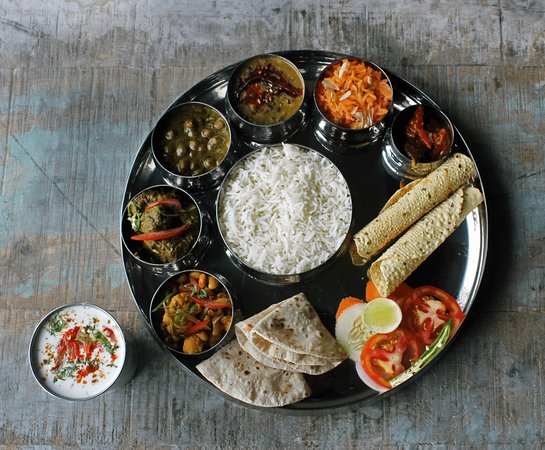Gulab Jamun (Full)





Description
Gulab Jamun, with its enticing aroma and melt-in-your-mouth texture, holds a special place in the heart of every dessert lover. This iconic Indian sweet, known for its indulgent sweetness and aromatic spices, has delighted palates for generations.
Origins and Cultural Significance: The origins of Gulab Jamun can be traced back to medieval India, where it was introduced by Persian and Central Asian traders. Over time, Gulab Jamun became an integral part of Indian cuisine, symbolizing celebrations, hospitality, and the joy of shared moments.
Ingredients and Preparation: To make Gulab Jamun, you'll need:
- Khoya (milk solids)
- All-purpose flour
- Clarified butter (ghee)
- Baking soda
- Sugar
- Water
- Rose water
- Cardamom pods
- Saffron strands
The dough is prepared by kneading together khoya, flour, and a pinch of baking soda, then shaped into small balls and deep-fried until golden brown. These fried balls are then soaked in sugar syrup infused with rose water, cardamom, and saffron, imparting their signature flavor and aroma.
Crafting the Perfect Gulab Jamun: Achieving the perfect Gulab Jamun requires attention to detail and proper technique. The dough should be soft and smooth, free from any cracks or dryness, to ensure that the finished sweets are tender and moist. Additionally, the sugar syrup should have the right consistency and flavor, infused with aromatic spices for an authentic taste.
Variations and Serving Suggestions: While the classic Gulab Jamun recipe remains timeless, there are several variations and serving suggestions to explore, including:
- Kala Jamun: Darker in color and slightly denser in texture, Kala Jamun is made by caramelizing the sugar syrup to achieve a deeper flavor.
- Stuffed Gulab Jamun: Fill the dough with a variety of fillings such as nuts, khoya, or flavored creams for a delightful surprise in every bite.
- Ice Cream with Gulab Jamun: Serve warm Gulab Jamun alongside a scoop of vanilla ice cream for a decadent dessert experience.
Health Benefits of Gulab Jamun: While Gulab Jamun is undeniably indulgent, it also offers several health benefits when consumed in moderation, including:
- Calcium and Protein: Gulab Jamun contains milk solids (khoya), which are rich in calcium and protein, essential for bone health and muscle function.
- Antioxidants: Cardamom and saffron, used in Gulab Jamun, are rich in antioxidants that help boost immunity and protect against oxidative stress.
- Energy Source: The sugar content in Gulab Jamun provides a quick source of energy, making it a popular choice for instant refreshment and revitalization.
Conclusion: Gulab Jamun is more than just a dessert; it's a celebration of flavors, textures, and traditions that bring people together in joyous moments. Whether enjoyed during festivals, weddings, or everyday indulgences, Gulab Jamun continues to enchant hearts and taste buds with its timeless appeal.
FAQs (Frequently Asked Questions):
What does "Gulab Jamun" mean?
- "Gulab" translates to "rose" in Persian, while "Jamun" refers to a type of fruit native to India. Together, they signify the rose-flavored syrup in which the sweet balls are soaked, resembling the color of rose petals.
Can I make Gulab Jamun at home?
- Yes, Gulab Jamun can be made at home using readily available ingredients like khoya, flour, and sugar. Follow a trusted recipe and method for best results.
What is the difference between Gulab Jamun and Rasgulla?
- While both are popular Indian sweets, Gulab Jamun is made from khoya-based dough and soaked in sugar syrup, whereas Rasgulla is made from chenna (cheese curds) and boiled in sugar syrup.
Can I store Gulab Jamun for later consumption?
- Yes, Gulab Jamun can be stored in an airtight container in the refrigerator for several days. Reheat before serving for the best taste and texture.
Is Gulab Jamun suitable for vegans?
- Traditional Gulab Jamun contains dairy ingredients like khoya and ghee, making it unsuitable for vegans. However, vegan alternatives using non-dairy milk and ghee substitutes are available.
What is the best way to serve Gulab Jamun?
- Gulab Jamun can be served warm or at room temperature, garnished with chopped nuts or a sprinkle of saffron for added flavor and presentation.
Can I make Gulab Jamun without khoya?
- Yes, you can make Gulab Jamun using milk powder or condensed milk as a substitute for khoya. Adjust the quantity and consistency of the dough accordingly.
Are there any regional variations of Gulab Jamun?
- Yes, different regions of India may have their own variations of Gulab Jamun, with slight differences in ingredients, flavors, and presentation.
What is the significance of Gulab Jamun in Indian culture?
- Gulab Jamun holds cultural significance in India and is often served during festivals, weddings, and other special occasions as a symbol of sweetness and abundance.
Can I make Gulab Jamun with gluten-free flour?
- Yes, you can use gluten-free flour alternatives like rice flour or almond flour to make Gulab Jamun for those with gluten sensitivities or dietary restrictions.










